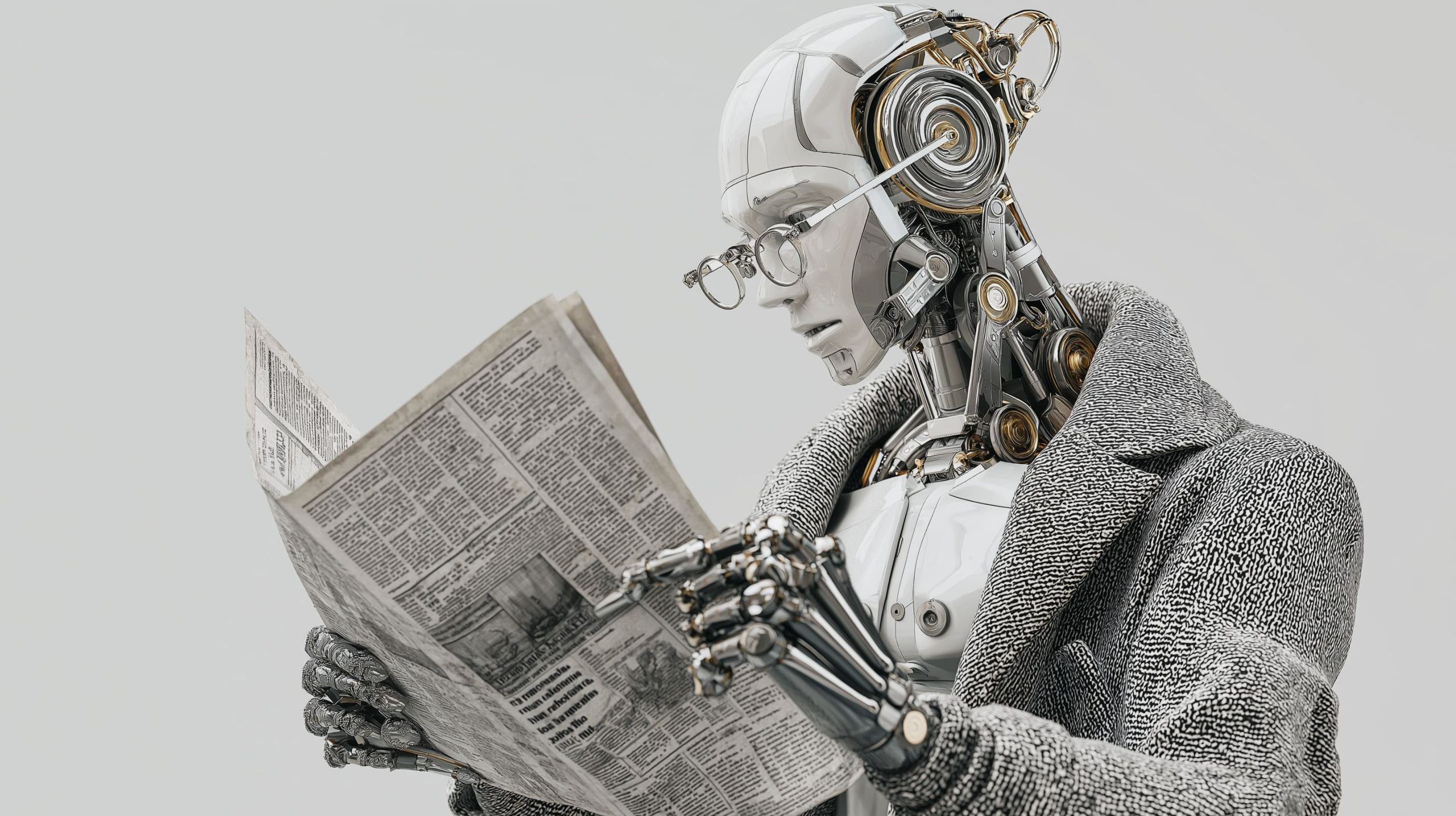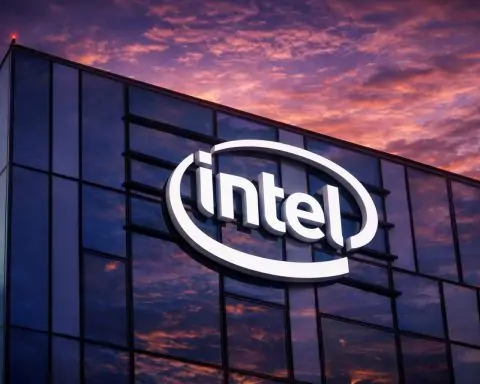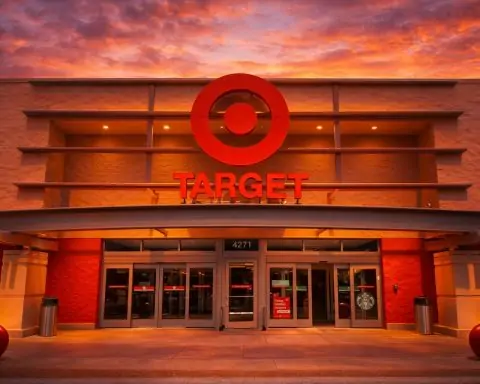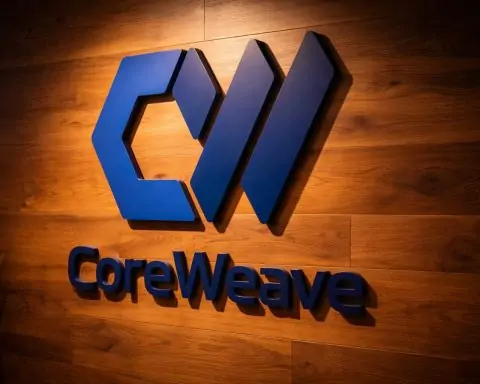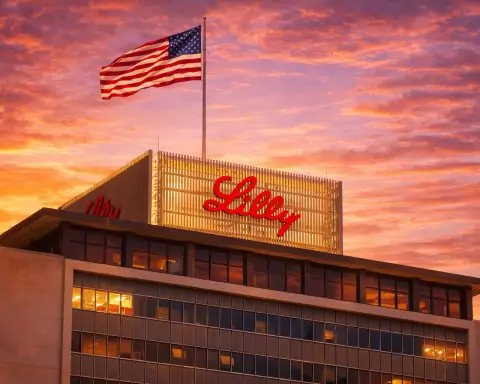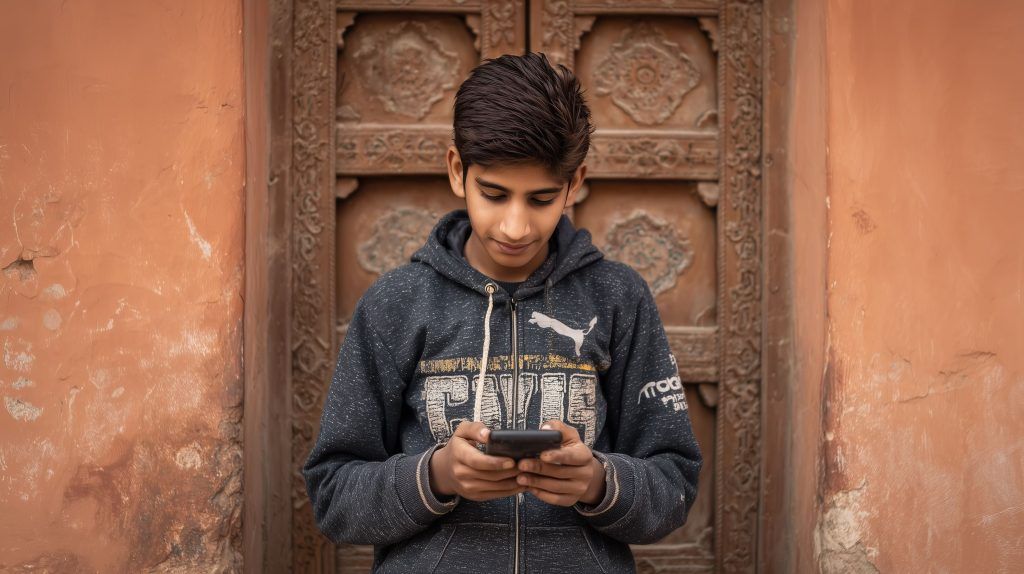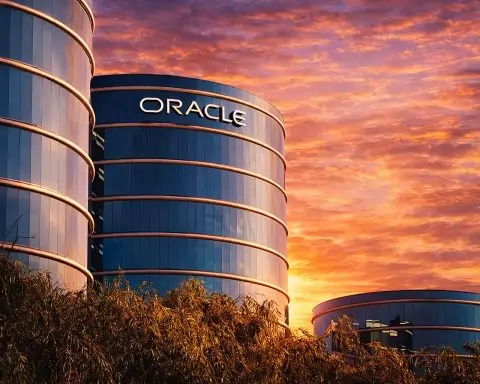- On August 2, 2025, the EU AI Act reached a milestone with governance standards, general-purpose AI (GPAI) classification and a sanctions regime coming into force, as Alphabet’s Google signed the EU’s voluntary AI Code of Practice while Meta declined.
- A U.S. Senate plan led by Ted Cruz and Marsha Blackburn to preempt state AI regulations was revised to a five-year moratorium with carve-outs on issues like artists’ voices and child safety, drawing opposition from 17 Republican governors led by Arkansas Governor Sarah Huckabee Sanders and criticism from Senator Maria Cantwell.
- At WAIC, Chinese Premier Li Qiang proposed a new international AI cooperation organization and a global governance framework with broad consensus, backed by a 13-point Global AI Action Plan and talks of a global AI body possibly headquartered in Shanghai.
- OpenAI reportedly raised $8.3 billion in new financing at a $300 billion valuation, led by Dragoneer with participation from Blackstone, T. Rowe Price, Tiger Global, Andreessen Horowitz and sovereign funds, as it pursues a $40 billion funding goal for 2025 and revenues around $12–13 billion annually.
- In late July, Alibaba’s research arm released Qwen-3, a 235B open-source LLM, with an FP8 8-bit quantized version under a permissive license and reportedly outperforming Claude in some benchmarks.
- Mistral AI in Paris is in talks to raise about $1 billion at a valuation up to $10 billion, after a €105 million seed round in 2023 and with partnerships with Nvidia and the French government.
- A Florida jury awarded $243 million to the family of a driver in a 2019 crash involving Tesla’s Autopilot, marking the first major verdict attributing partial liability to Tesla for an Autopilot-enabled crash.
- WeRide earned the first robotaxi permit in Saudi Arabia, with a Riyadh pilot in partnership with Uber and plans for full commercial service by late 2025.
- Palo Alto Networks announced a $25 billion acquisition of CyberArk Software, its largest ever, to bolster zero-trust identity security amid the rise of AI-enabled cyber threats.
- The Vogue US edition ran a full-page ad for Guess jeans featuring an AI-generated model, sparking backlash over artificial beauty standards and prompting calls for guidelines on AI in advertising.
Global AI Policy & Regulation
Europe Sets the Pace: The European Union’s landmark AI Act hit a new milestone as of August 2, with key provisions on governance standards, general-purpose AI (GPAI) and a sanctions regime coming into force [1]. This is the Act’s biggest rollout since it took effect one year ago, aiming to categorize AI tools by risk levels and enforce transparency. Companies are scrambling to comply – and to influence the rules. Notably, Alphabet’s Google agreed to sign the EU’s voluntary AI Code of Practice meant to guide compliance, even as rival Meta refused over legal uncertainties [2]. Kent Walker, Google’s president of global affairs (and chief legal officer), said the company joined with hope the code will “promote … secure, first-rate AI tools” for Europeans, though he cautioned that deviations in copyright or trade-secret rules could “chill … model development” and harm Europe’s competitiveness [3] [4]. European tech experts, meanwhile, warn the regulatory race is still uphill. “The first year has shown that AI is advancing faster than the legislative capacity to regulate it,” observed Arnau Roca, managing partner at AI consultancy Overstand Intelligence, calling the EU law a necessary first step but noting how quickly new AI applications are testing ethical boundaries [5].
U.S. Federal vs State Showdown: In Washington, a political battle is raging over who should set the rules for AI. A Senate proposal – led by Senators Ted Cruz and Marsha Blackburn – seeks to preempt state AI regulations for five years as part of a broader tech bill, arguing a unified approach is needed to “keep America First in AI” [6]. The plan originally threatened to withhold federal funds from states that regulate AI, but fierce criticism forced a compromise. The revised measure shortens the moratorium to five years (down from ten) and lets states pass rules on things like protecting artists’ voices or child safety, so long as they don’t pose an “undue burden” on AI development [7] [8]. Still, many state leaders remain outraged. 17 Republican governors – led by Arkansas Gov. Sarah Huckabee Sanders – penned a blunt letter opposing the moratorium, declaring “We cannot support a provision that takes away states’ powers to protect our citizens… Let states function as the laboratories of democracy… allow state leaders to protect our people” [9]. Even within Congress the issue cut across party lines: some see federal standards as key to AI innovation, while others (like Sen. Maria Cantwell) slammed the plan as a “giveaway to tech companies” that “does nothing to protect kids or consumers” [10]. The debate underscores a larger tension between Silicon Valley’s push for light-touch rules and local authorities’ efforts to rein in AI harms.
China Calls for Global AI Governance: Beijing used its high-profile World Artificial Intelligence Conference (WAIC) to position itself as a leader in shaping global AI norms. Chinese Premier Li Qiang proposed creating a new international AI cooperation organization to coordinate rules for the fast-evolving technology [11] [12]. Without naming the U.S., Li warned that AI could become “the exclusive game of a few countries and companies” if the world fails to collaborate [13]. He urged nations to work together on a “global AI governance framework that has broad consensus” [14] and offered to share China’s AI advancements – from chips to talent – especially with developing “Global South” countries [15]. This initiative comes as China also released a 13-point Global AI Action Plan advocating international standards and increased compute power for AI [16]. The Chinese stance contrasts with U.S. moves to restrict exports of advanced AI chips to China, highlighting an emerging geopolitical race: one in which China is pitching cooperation and open access, while Western nations debate risk regulations. By proposing a new global AI body (possibly headquartered in Shanghai [17]), China is signaling that it wants a central voice – if not the steering wheel – in how AI is governed worldwide.
Industry & Research Developments
Big Tech’s AI Ambitions: Tech giants accelerated their AI agendas. Apple made waves with reports that it has formed a secretive new team – dubbed “Answers, Knowledge, and Information” – to develop a ChatGPT-like AI answer engine that could integrate across Siri, Safari, and other products [18] [19]. The project, first revealed by Bloomberg, suggests Apple is racing to catch up in generative AI. Internally, CEO Tim Cook has been rallying staff to double down on AI. In an August all-hands meeting after a lukewarm earnings call, Cook acknowledged Apple had “fallen behind” rivals and insisted “Apple must do this. Apple will do this.” He vowed to “significantly” increase AI R&D, reminding employees that Apple wasn’t first to PCs or smartphones but still reinvented those markets [20] [21]. Investors are taking note – just days earlier Apple hinted it may need to renegotiate its Google search deal as it develops its own AI search capabilities [22]. Meanwhile, across the industry, other AI product news abounded: OpenAI’s ChatGPT (whose multi-modal version recently hit 150 million weekly users [23]) continued to spur competitors, and Meta and Microsoft hinted at upcoming model upgrades in earnings calls (each vying not to cede ground in the AI platform race).
Generative AI Breakthroughs: New large language models (LLMs) and generative AI systems are pushing the envelope. In late July, Alibaba’s research arm released an advanced open-source LLM, Qwen-3 (235B), that immediately shot up the rankings of AI benchmarks. The updated Qwen3 model demonstrated state-of-the-art performance on complex reasoning, math, coding and multilingual tasks [24] – even outperforming Anthropic’s Claude and other Western models in certain evaluations. Crucially, Alibaba open-sourced Qwen under a permissive license, allowing developers worldwide to use and fine-tune it for their needs [25]. The release also included an innovative efficiency twist: a new FP8 quantized version of Qwen3 that uses 8-bit floating point precision. This compressed model can run with roughly half the GPU memory and compute of the full model without significant loss of accuracy [26] [27]. In practical terms, that means organizations could deploy a 235-billion-parameter AI on far cheaper hardware – a potential game-changer for AI accessibility. Analysts noted this could lower energy costs and enable on-premises LLM deployments that were previously impractical [28] [29]. Alibaba’s move underscores how quickly the open-source AI community is closing the gap with the Googles and OpenAIs of the world. “Teams can scale Qwen3’s capabilities to single-node GPU instances… avoiding the need for massive multi-GPU clusters,” VentureBeat observed, emphasizing the appeal to enterprise users constrained by infrastructure [30] [31]. China’s tech giants Baidu and Huawei also announced upgrades to their models around the same time, feeding a “model race” that is now truly global.
Robotics & AI-Driven Design: In the lab, researchers are harnessing generative AI in inventive new ways – including designing physical machines. A team at MIT’s Computer Science & AI Lab (CSAIL) unveiled two prototype robots created with the help of AI algorithms [32]. In one project, they aimed to build a jumping robot that could leap higher. Traditional engineering might optimize a robot’s legs by simply making them lighter or springier, but the AI came up with an unexpected solution. “Our diffusion model suggested a unique leg shape that allowed the robot to store more energy before it jumped, without making the links too thin,” explained Byungchul Kim, co-lead of the study [33]. The resulting design, which humans hadn’t considered, uses a kind of arched, flexible linkage to maximize jump power without snapping – a creative twist that taught the engineers something new about underlying physics, Kim noted. Using AI, the team rapidly iterated designs in simulation and then 3D-printed the best one for real-world tests [34] [35]. In a second project, MIT worked with University of Wisconsin researchers on an underwater glider for ocean data collection [36] [37]. They fed a generative model shapes of marine animals (manta rays, sharks, etc.) and submarines; the AI generated dozens of aquatic designs, from which two novel gliders – one like a two-winged plane, another like a four-finned flat fish – were built and shown to glide more efficiently than conventional designs [38]. “We’ve developed a semi-automated process that can help us test unconventional designs that would be very taxing for humans to design,” said Peter Yichen Chen, an MIT postdoc and co-lead on the project [39]. This approach, mixing human creativity with AI’s generative power, could drastically cut the trial-and-error in robotics – pointing to agile new development cycles for drones, manufacturing bots, and beyond. Researchers say the next step is applying these AI design tools to larger-scale robots (from factory arms to humanoids), where small efficiency gains can mean big energy savings or performance boosts.
Autonomous Systems on the Road: The race to autonomy saw important strides – and speed bumps – over the past 48 hours. Tesla began rolling out its long-touted “Robotaxi” service to users in the San Francisco Bay Area, but with an ironic twist: in California the “robotaxis” still have human safety drivers behind the wheel [40] [41]. A Tesla program update informed early riders that in California their rides are “conducted with a safety driver using Full Self-Driving (Supervised)” per state regulations [42]. Outside California (e.g. in Austin, where Tesla also operates pilot robotaxis), vehicles can drive themselves, but in Silicon Valley Tesla lacks the permits for fully driverless operation [43] [44]. CEO Elon Musk said on an earnings call that Tesla is “getting the regulatory permission to launch” robotaxis in multiple markets and hopes to remove drivers soon [45]. Still, footage from San Francisco this week showed Tesla’s cars being manually driven for now [46] [47], underlining the gap between Musk’s branding and reality. Critics – including California regulators – have warned that terms like “Full Self-Driving” mislead customers on the system’s true capabilities [48]. By contrast, Waymo (Google’s AV unit) and GM’s Cruise already operate fully driverless robo-cabs in San Francisco, having spent years navigating the state’s stringent AV approval process.
Meanwhile, other players notched genuine autonomous milestones. WeRide, a Guangzhou-based startup, became the first company to secure a robotaxi permit in Saudi Arabia as part of the kingdom’s AV testing program [49]. WeRide, which is backed by Alibaba and has pilots in China, the UAE, France, and the U.S., launched a trial in Riyadh in partnership with Uber, covering airport and downtown routes with self-driving cars (safety operator onboard) [50] [51]. Saudi regulators granted the permit after a year-long sandbox program – and WeRide expects to begin full commercial service by late 2025, expanding to multiple Saudi cities with fleets of robo-taxis, shuttles and even street-cleaning bots (a project dubbed “Robosweeper”) [52] [53]. In the U.S., autonomous trucking firm Aurora announced it has logged over 20,000 fully driverless miles and has now extended its robotruck operations to nighttime hauls on highways in Texas [54] [55]. Running runs between Dallas and Houston in the dark doubles utilization for Aurora’s trucks – a big step toward 24/7 freight delivery. The company’s latest Aurora Driver system, equipped with long-range lidar, can detect obstacles 450 meters ahead even at night, addressing a key safety challenge for highway autonomy [56] [57]. Aurora also opened a new terminal in Phoenix for westward expansion and reported it has enough cash to run through mid-2027, signaling confidence in its roadmap [58] [59]. Taken together, these developments show a mixed reality: autonomous tech is making concrete progress in logistics and geofenced services, but robo-taxis in complex urban settings are still navigating regulatory and technical hurdles, often requiring a human in the loop for now.
Funding & Acquisitions
OpenAI’s Massive Top-Up: The ChatGPT creator OpenAI has reportedly secured $8.3 billion in new financing at a staggering $300 billion valuation [60]. The funding round – led by Dragoneer Investment Group with participation from a who’s-who of big investors (Blackstone, T. Rowe Price, Tiger Global, Andreessen Horowitz, and sovereign funds, among others) – comes months ahead of schedule as investors clamor for a piece of the AI leader [61] [62]. It’s part of OpenAI’s bold plan to raise $40 billion in 2025, fueling its transition from nonprofit lab to for-profit tech titan [63]. Earlier this year, OpenAI raised $2.5B in a first tranche; this new infusion puts it well on the way to that goal. The New York Times and The Information also reported that OpenAI’s revenues have exploded to an annualized $12–13 billion (with projections of $20B by year-end) on the back of ChatGPT’s popularity [64]. Some early investors have complained their allocations in this round were cut back to make room for new strategic backers [65]. But OpenAI, led by CEO Sam Altman, appears to be taking the long view – prioritizing deep-pocketed partners (including a rumored Saudi and UAE presence) as it eyes ever-larger compute investments and a potential future IPO. The oversubscribed round underscores the AI investment frenzy: OpenAI’s valuation has roughly doubled since 2024 and now rivals the likes of Stripe or SpaceX as one of the world’s most valuable startups [66].
Mistral AI – Europe’s Great Hope: In Paris, buzz surrounds Mistral AI, a startup founded by ex-Meta researchers that is often touted as “Europe’s OpenAI.” According to the Financial Times, Mistral is in talks to raise about $1 billion at a valuation up to $10 billion to accelerate its growth [67] [68]. The company only launched in 2023 (famously with a record €105 million seed round) but has since rolled out its own large language model (Mistral 7B and a chatbot called Le Chat) and inked high-profile partnerships – including a recent cloud and compute collaboration with Nvidia and the French government [69]. French President Emmanuel Macron has championed Mistral’s rise as crucial for European tech sovereignty, declaring “This is a game changer,” and arguing Europe needs its own AI champions so it doesn’t rely solely on the US or China [70] [71]. Sources say Mistral’s revenues are on track to exceed $100 million annually – with a handful of big corporate contracts in the ~$100M range already in hand or near closing [72]. If the new funding materializes, Mistral plans to scale up its R&D and data center capacity in France, further develop its models, and aggressively pursue the European enterprise market that is eager for locally-controlled AI solutions. The raise would also mark one of Europe’s largest AI funding rounds to date, reflecting a continent-wide push (backed by EU initiatives and venture funds) to nurture homegrown AI alternatives.
Fresh Funding for AI Startups: Investors continued to pour capital into specialized AI startups across the globe:
- Fal – a San Francisco-based generative media platform – closed a $125 million Series C led by Meritech at a $1.5 billion valuation [73]. Fal (founded by ex-Googlers Burkay Gür and Görkem Yurtseven) offers infrastructure for running AI models that generate images, video, and audio for enterprise clients [74]. With consumer demand for image generators surging – ChatGPT’s latest image creation feature went viral this spring [75] – Fal’s services help companies deploy these multimodal models at scale. Most of its customers use Fal to produce endless variations of product images and ads for e-commerce and marketing [76]. “With generative AI, you can create infinite iterations of the same ad,” noted CEO Burkay Gür, explaining that brands can tailor visuals to different demographics and A/B test much faster than before [77]. The new funding (which included Salesforce Ventures, Shopify and Google’s AI fund) will go toward expanding Fal’s platform and global reach as demand for non-text AI content “explodes,” the company said.
- Ambience Healthcare – a healthcare AI startup – raised $243 million in new funding, vaulting it to “unicorn” status at a $1 billion+ valuation [78] [79]. Ambience’s AI platform uses “ambient listening” to automatically transcribe and generate clinical notes during doctor visits, aiming to eliminate the tedious paperwork that burdens physicians [80]. “Documentation has long been a source of friction… Ambience is turning it into a source of strength,” said Michael Ng, the company’s CEO, describing how its tool frees up clinicians to focus on patients instead of typing notes [81]. The round (one of the largest healthtech raises this year) reflects the intense interest in AI “scribes” and medical coding assistants. Hospitals and clinics are investing in these tools to combat doctor burnout – the U.S. spends an estimated $1.5 trillion on healthcare administration yearly – and to improve accuracy in records [82] [83]. The funding will fuel Ambience’s growth in deploying its system across major healthcare networks, and the company hinted at R&D into more advanced AI that can not only record but also analyze patient data to assist clinical decisions [84] [85].
- Other notable rounds: In AI hardware, San Diego-based SiMa.ai (which builds energy-efficient chips for “edge” AI in devices) secured $85 million in a Series D to boost production of its new “Physical AI” platform [86]. And in finance, AI-powered fintech Ramp reportedly raised $500 million at a $8.5 billion valuation to expand its expense management AI tools [87]. These deals, alongside dozens of smaller fundings, show that even amid broader VC cooldowns, AI startups are shattering records – attracting $100B+ in H1 2025 alone according to industry reports [88].
Big AI-Fueled Acquisitions: Established tech companies are opening their wallets to acquire AI capabilities:
- In cybersecurity, Palo Alto Networks announced a blockbuster $25 billion deal to buy CyberArk Software, an Israeli firm known for identity security solutions [89]. It’s Palo Alto’s largest acquisition ever and one of the biggest tech M&A deals of the year. CEO Nikesh Arora said the move was driven by the rise of AI-enabled cyber threats and the “explosion of machine identities” – i.e. software bots and AI agents that need securing just like human users [90]. “The future of security must be built on the vision that every identity requires the right level of privilege controls,” Arora noted [91]. By absorbing CyberArk, Palo Alto aims to offer customers a one-stop platform with zero-trust identity management, protecting against AI-powered attacks that can compromise credentials. The deal follows other big security tie-ups (Alphabet’s $32B purchase of cloud security startup Wiz in March, for example) and highlights how AI is spurring consolidation in cybersecurity, as companies seek integrated defenses against more sophisticated, automated threats [92] [93]. Investors initially reacted coolly (PANW shares fell on integration concerns [94]), but many analysts see long-term logic in the deal as businesses fortify their systems for the AI era.
- In enterprise software, SAP revealed it is acquiring SmartRecruiters, a San Francisco-based recruiting platform, to bolster its cloud HR suite [95]. SmartRecruiters specializes in AI-enhanced recruitment workflows – its tools help HR teams source candidates, automate resume screening, and streamline hiring. SAP said SmartRecruiters’ “powerful, user-friendly interfaces and seamless workflows” will complement SAP’s existing offerings in talent management [96] [97]. While terms weren’t disclosed [98], the startup was valued at $1.5B in its last funding round [99]. SAP’s Chief Product Officer Muhammad Alam noted that with AI, the combined system will let customers manage the entire candidate lifecycle in one place – from sourcing and interviewing to onboarding – with new levels of efficiency [100]. This purchase shows how incumbents are snapping up specialized AI startups to stay competitive. (It’s reminiscent of Workday’s $700M acquisition of sourcing AI firm Paddle HR earlier this year, as HR tech becomes an AI hotbed.) The deal is expected to close in Q4 and underscores the “platformization” trend: enterprise giants assembling end-to-end solutions infused with AI at each step.
- We’re also seeing legacy automakers make AI bets – for instance, General Motors this week closed its acquisition of Voyage (an autonomous vehicle startup) as it races to inject AI-driven self-driving tech into its lineup. And chipmaker AMD agreed to buy an AI software firm Mipsology to beef up its AI accelerator stack. These smaller deals, while not grabbing headlines like the ones above, contribute to a record pace of AI-related M&A in 2025 as both tech and non-tech companies recognize they need AI talent and tech – fast.
Public Debates & Controversies
AI in Creative Fields – Backlash and Fear: As AI spreads into creative industries, it’s igniting fierce public debates about authenticity, jobs, and ethics. In the fashion world, a seemingly innocuous advertisement set off a firestorm. The August issue of Vogue (U.S. edition) featured a full-page ad for Guess jeans with a glamorous model – glossy blonde hair, perfect curves – who didn’t actually exist. She was entirely AI-generated [101]. Once word got out, the internet buzzed for days with backlash [102]. Critics argued the ad crossed a line, presenting a computer-crafted beauty ideal in the “fashion bible” where trends are set [103]. For many models and fashion workers, it felt like a threat. “Modeling as a profession is already challenging enough without having to compete with now new digital standards of perfection that can be achieved with AI,” said Sarah Murray, a commercial model, describing her dismay at the ad [104]. Detractors noted the model in the ad embodied narrow beauty standards (thin, buxom, flawless skin) and worried that using AI “photoshoots” will only reinforce unrealistic ideals – and do so more cheaply than hiring diverse human models. “To many, an ad versus an editorial is a distinction without a difference,” wrote one fashion critic, condemning Vogue for normalizing AI imagery [105]. Industry insiders acknowledge the economic temptation; as tech journalist Amy Odell put it, “It’s just so much cheaper for [brands] to use AI models now. Brands need a lot of content… if they can save money… they will.” [106]. AI models can pump out infinite product shots or Instagram posts at a fraction of the cost and time, which is why retailers from Levi’s to H&M have begun experimenting [107] [108]. The concern is that humans – especially models from underrepresented groups – will be squeezed out. Murray and others have called this trend “artificial diversity” (when companies claim inclusivity by simply generating models of various ethnicities or body types via AI) and are urging both the fashion industry and regulators to set guidelines on if and how AI can be used in advertising [109] [110]. The Vogue incident has sparked a wider discussion among designers and advertisers: will AI assist creatives or ultimately replace them? For now, the controversy has at least made one thing clear – audiences value the “human touch”. As one fashion AI founder noted, truly successful models (even virtual ones) have a personality or imperfection that resonates, something that is “hard to erode in zeros and ones.” [111] [112]
A parallel battle is unfolding in the film and voice acting sector. Across Europe, voice actors are mobilizing against the rise of AI-generated voices that threaten to undercut their livelihoods [113]. Dubbing foreign films and TV into local languages is big business (a $4.3B market expected to double in the next decade [114]), and traditionally it’s kept legions of actors, translators, and dubbing directors employed. But now AI firms have developed tools to clone voices and automate dubbing – sometimes with mixed quality, but improving rapidly. This has voice artists “fearing job loss” and demanding protective regulation [115]. In France, a collective of voice actors (under the banner “Touche Pas à Ma VF”, meaning “Don’t Touch My French Version”) is campaigning to require disclosures and limits on AI dubbing [116]. Boris Rehlinger, one of France’s most famous dubbers (the French voice of Hollywood stars like Ben Affleck and Joaquin Phoenix), has become a spokesperson for the cause. “I feel threatened even though my voice hasn’t been replaced by AI yet,” Rehlinger told Reuters, explaining that studios have begun exploring AI and it’s only a matter of time [117]. The group is calling on the EU to include voice data protections in its AI Act and possibly establish a system where actors are compensated when their voices are synthesized. AI dubbing startups argue that the tech can be a tool alongside human actors – for example, allowing immediate translation of content into dozens of languages, which can then be refined by human voice directors. They also note that truly convincing emotion and performance still require human touch. “AI brings efficiency, but humans remain key for quality,” insists one AI dubbing CEO [118]. Nonetheless, voice artists point out that if producers can save money by auto-generating voices for minor characters or background lines, they likely will – and that cuts out the junior actors who often rely on those jobs. The issue even surfaced at a recent European Parliament panel on culture, where representatives discussed whether using someone’s voice without explicit consent could violate personality rights. It’s a classic labor vs. technology tension: does AI augmentation mean augmentation or replacement? The coming months may see negotiated agreements (as Hollywood’s own actors’ union grappled with in 2023 over digital likenesses), but for now, Europe’s voice actors are proactively pushing back against what they call “unethical dubbing practices.”
Safety & Ethics of AI in the Wild: Questions of accountability and ethics in real-world AI applications also came to the forefront. A notable legal decision landed in the U.S. that could set a precedent for AI-driven car safety. A Florida jury found Tesla partially liable in a 2019 crash where a driver using Tesla’s Autopilot driver-assist fatally collided with another vehicle [119] [120]. This is the first major verdict holding Tesla directly accountable for an accident involving its semi-autonomous system (previous lawsuits either settled or blamed driver error). Jurors awarded $243 million to the victim’s family [121], indicating they agreed that Tesla bore some responsibility by designing a system that allowed the driver to become dangerously over-reliant. During the trial, it emerged the driver had assumed Autopilot would prevent a collision while he was distracted – a misconception Tesla’s critics say is fueled by its marketing. Tesla famously names its systems “Autopilot” and “Full Self-Driving” (FSD), which consumer groups and even the California DMV have blasted as misleading since the cars are not fully autonomous and require constant driver supervision [122]. The plaintiffs argued that Tesla overstated the capabilities of Autopilot, lulling customers into a false sense of security. Tesla’s defense maintained that the driver was responsible and that its user manuals and alerts make clear the system is not hands-free. Nonetheless, the jury’s decision suggests a shifting expectation: if a company’s AI encourages predictable misuse, the company can be found negligent. Tesla responded by calling the verdict “wrong” and plans to appeal [123], warning that penalizing Autopilot could “hinder development of safety features”. But the case has already intensified the debate over how to govern AI in consumer products. Regulators at NHTSA (the highway safety agency) are in the midst of investigating Tesla’s FSD Beta after dozens of crashes, and this verdict may embolden them. Ethicists say the core issue is transparency: Tesla collects vast driving data with its AI, but when something goes awry, it’s hard for victims to access evidence due to proprietary secrecy. That asymmetry in accountability – AI systems as black boxes – is something policymakers are keen to address via new reporting requirements. Beyond Tesla, the incident is a cautionary tale for any company deploying AI that interacts with public safety (from self-driving cars to AI in healthcare): clear communication about limitations is as important as the innovation itself.
Finally, the existential “AI ethics” discussion continues in academia and public forums. Over the weekend, prominent AI pioneers and critics (like Yoshua Bengio and Gary Marcus) penned op-eds urging global norms for “AI guardrails” – warning of scenarios from biased algorithms amplifying inequalities to long-term concerns about superintelligent AI. And a viral open-letter from hundreds of writers and artists called on AI companies to compensate creatives whose work trains generative models, framing it as a fight for the soul of human creativity. While these debates aren’t resolved in 48 hours, the news from August 3–4 shows them manifesting in concrete ways – in courtrooms, picket lines, and magazines – as society grapples with AI’s rapid infiltration into daily life. Each breakthrough or big investment is now met with the question: How will this impact people, and who gets to decide the rules? The world is watching closely, and the conversation around AI’s future has never been more urgent.
Sources: Major news outlets and expert commentary from Aug 3–4, 2025, including Reuters [124] [125], CIO [126] [127], Bloomberg/TechCrunch [128] [129], VentureBeat [130], MIT CSAIL/IOT World Today [131] [132], auto connected (industry news) [133] [134], Financial Times/PYMNTS [135] [136], Reuters (multiple segments) [137] [138], TechCrunch [139], and others. Each development has been corroborated with primary sources to ensure a comprehensive and accurate roundup of the AI news from August 3–4, 2025.
References
1. www.cio.com, 2. www.reuters.com, 3. www.reuters.com, 4. www.reuters.com, 5. www.cio.com, 6. www.reuters.com, 7. www.reuters.com, 8. www.reuters.com, 9. www.reuters.com, 10. www.reuters.com, 11. www.reuters.com, 12. www.reuters.com, 13. www.reuters.com, 14. www.reuters.com, 15. www.reuters.com, 16. www.ciw.news, 17. www.reuters.com, 18. techcrunch.com, 19. techcrunch.com, 20. techcrunch.com, 21. techcrunch.com, 22. techcrunch.com, 23. www.reuters.com, 24. venturebeat.com, 25. venturebeat.com, 26. venturebeat.com, 27. venturebeat.com, 28. venturebeat.com, 29. venturebeat.com, 30. venturebeat.com, 31. venturebeat.com, 32. www.iotworldtoday.com, 33. www.iotworldtoday.com, 34. www.iotworldtoday.com, 35. www.iotworldtoday.com, 36. www.iotworldtoday.com, 37. www.iotworldtoday.com, 38. www.iotworldtoday.com, 39. www.iotworldtoday.com, 40. www.reuters.com, 41. www.reuters.com, 42. www.reuters.com, 43. www.reuters.com, 44. www.reuters.com, 45. www.reuters.com, 46. www.autoconnectedcar.com, 47. www.autoconnectedcar.com, 48. www.autoconnectedcar.com, 49. www.autoconnectedcar.com, 50. www.autoconnectedcar.com, 51. www.autoconnectedcar.com, 52. www.autoconnectedcar.com, 53. www.autoconnectedcar.com, 54. www.autoconnectedcar.com, 55. www.autoconnectedcar.com, 56. www.autoconnectedcar.com, 57. www.autoconnectedcar.com, 58. www.autoconnectedcar.com, 59. www.autoconnectedcar.com, 60. techcrunch.com, 61. techcrunch.com, 62. techcrunch.com, 63. techcrunch.com, 64. techcrunch.com, 65. techcrunch.com, 66. www.techmeme.com, 67. www.pymnts.com, 68. www.pymnts.com, 69. www.pymnts.com, 70. www.pymnts.com, 71. www.pymnts.com, 72. www.pymnts.com, 73. www.reuters.com, 74. www.reuters.com, 75. www.reuters.com, 76. www.reuters.com, 77. www.reuters.com, 78. www.pymnts.com, 79. www.pymnts.com, 80. www.pymnts.com, 81. www.pymnts.com, 82. www.pymnts.com, 83. www.pymnts.com, 84. www.pymnts.com, 85. www.pymnts.com, 86. www.reuters.com, 87. startupnews.fyi, 88. fourweekmba.com, 89. www.reuters.com, 90. www.reuters.com, 91. www.reuters.com, 92. www.reuters.com, 93. www.reuters.com, 94. www.reuters.com, 95. techcrunch.com, 96. techcrunch.com, 97. techcrunch.com, 98. techcrunch.com, 99. techcrunch.com, 100. techcrunch.com, 101. techcrunch.com, 102. techcrunch.com, 103. techcrunch.com, 104. techcrunch.com, 105. techcrunch.com, 106. techcrunch.com, 107. techcrunch.com, 108. techcrunch.com, 109. techcrunch.com, 110. techcrunch.com, 111. techcrunch.com, 112. techcrunch.com, 113. www.reuters.com, 114. www.reuters.com, 115. www.reuters.com, 116. www.reuters.com, 117. www.reuters.com, 118. www.reuters.com, 119. www.autoconnectedcar.com, 120. www.autoconnectedcar.com, 121. www.autoconnectedcar.com, 122. www.autoconnectedcar.com, 123. www.autoconnectedcar.com, 124. www.reuters.com, 125. www.reuters.com, 126. www.cio.com, 127. www.cio.com, 128. techcrunch.com, 129. techcrunch.com, 130. venturebeat.com, 131. www.iotworldtoday.com, 132. www.iotworldtoday.com, 133. www.autoconnectedcar.com, 134. www.autoconnectedcar.com, 135. www.pymnts.com, 136. www.pymnts.com, 137. www.reuters.com, 138. www.reuters.com, 139. techcrunch.com
